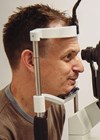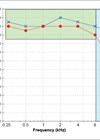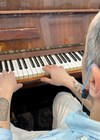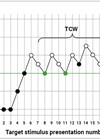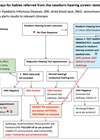Audiology features
A tribute to Mead C Killion, PhD 1939-2025
The renowned audiologist and inventor Mead Killion passed away comfortably on 3 November 2025 in Elkhorn, Wisconsin, US. Mead was known for inventing products that left us scratching our heads, trying to figure out why we hadn’t thought of them...
Genetic foundations of Ménière’s disease: changing the game
Sydney researchers reveal genetic roots of Ménière’s disease. Familial patterns and gene discoveries highlight autosomal inheritance in rare cases, transforming molecular insights. Ménière’s disease (MD) is a chronic disorder of the inner ear defined by clinical criteria of episodic vertigo...
Why, and how, audiologists should measure language ability: introducing AudiCloze
A cloze test uses missing ______ to assess language ability.How can audiologists measure ______ to help assess listening difficulties? Language ability and listening difficulties While it seems like stepping onto someone else’s turf, there is a strong need for audiologists...
Dementia assessments for people with deafness, deafblindness or visual impairment in Scotland
How is the medical community doing with assessing cognitive decline in those with a sensory impairment? The ALLIANCE Scottish Sensory Hub was tasked with finding out. Background There is growing evidence of a connection between dementia and sensory loss. However,...
OBITUARY: Jack Katz
Jack Katz. With deep respect and admiration, we remember Jack Katz as a towering figure in the field of audiology whose influence has left an indelible mark on generations of clinicians, educators, and researchers. Dr Katz’s passing is a profound...
The ups and downs of overseas research – the inner ear at altitude
Conducting research at extreme altitude presents unique challenges. This study of the inner ear at 5350m navigates setbacks in a quest for scientific discovery. Having completed a diploma in mountain medicine in my foundation years, I decided to undertake a...
Audiology and ophthalmology: a comparative perspective on diagnostics and patient care
What are the similarities and differences between audiology and ophthalmic practices, and what can we learn from each other? Rosalyn Painter finds out. I’m here with Chris Gordon and Anthony Vukic from Gloucestershire Hospitals NHS Foundation Trust to find out...
Why hearing above 8 kHz matters more than you think
This review explores the significance of extended high-frequency hearing loss (above 8 kHz) and why it may be worth doing clinically more frequently. There are many conditions that may hide underneath a normal audiogram, and one of the easiest to...
Hyperacusis and autism spectrum disorder
Several different auditory deficits have been found to be co-morbidities of ASD. This article reviews literature with respect to the relationship between hyperacusis and ASD. Autism spectrum disorder (ASD) can be characterised as a neurodevelopmental condition that is marked by...
Marshall Chasin: the harmony of music and audiology
Marshall Chasin, synonymous with the science of hearing and the art of music, discusses the techniques and technology he has employed over this career... so far. What’s the difference between your practice now and when you first started out? I...
Audible Contrast Threshold – a new test to guide setting help-in-noise features in hearing aids
A new diagnostic test that is quick and has directly applicable results to hearing aid settings has arrived, but how does it work? Leigh Martin has the answers. In an earlier article for ENT & Audiology News, Parmar and Rajasingam...
Early detection pathways for congenital cytomegalovirus for infants referred from the newborn hearing screen
This article discusses requirements for an early congenital cytomegalovirus (cCMV) detection pathway to ensure children do not miss out on the opportunity for timely diagnosis and treatment. The pathways described are currently in use in England and apply to well...








